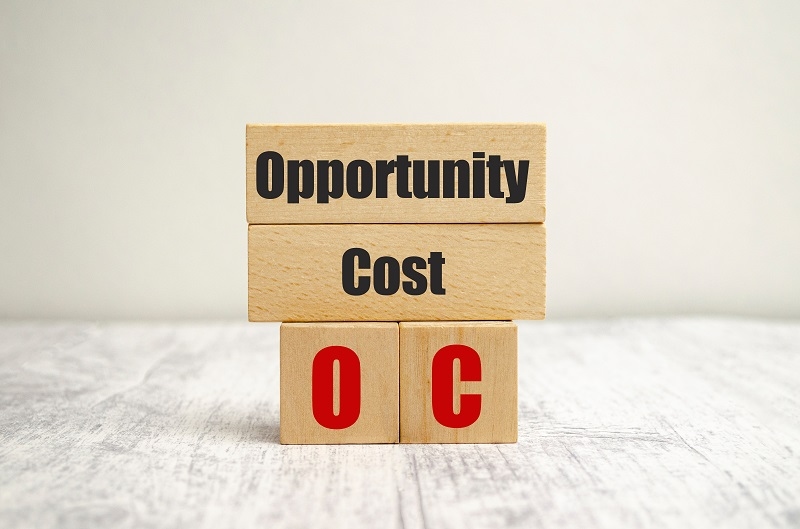
Let’s get one thing straight: every decision has a cost. Not just the price you pay upfront, but the value you silently walk away from. That, right there, is opportunity cost.
It’s not a buzzword. It’s not some abstract economic theory either. It’s the real, often invisible, price tag tied to every choice you make—whether in business, investments, or life.
Think of it this way: you choose one thing, you lose another. What is opportunity cost? It's the return or benefit you could’ve earned if you’d gone with the next best alternative instead.
Not just money. Time. Energy. Momentum.
In simple terms: You picked A. But B had potential too. That missed potential? That’s your opportunity cost.
When someone asks, “What is an opportunity cost?” they’re asking: what’s the price of the road not taken?
People love to talk about profits, gains, outcomes. But ignoring what you didn’t get can be the silent killer of smart decision-making. Especially in business.
Opportunity cost forces you to:
You’re always giving something up. The question is: was it worth it?
Every time you say yes to one project, you're saying no to another. That might not feel like a big deal at first, but over time, those "no" decisions pile up. They quietly shape the trajectory of your growth, profits, and time. Opportunity cost isn't loud. It's silent. But it compounds—fast.
This is why CEOs obsess over it, investors live by it, and sharp entrepreneurs bake it into every choice. If you ignore it, you’re flying blind.
More to Discover: How to Grow Your Business: Proven Strategies for Success
Let’s not overcomplicate it.
Here’s the basic formula:
Opportunity Cost = Return on Best Foregone Option - Return on Chosen Option
Example:
You invest in real estate and get a 6% return. But you passed on a stock investment that could’ve given you 10%.
Opportunity cost = 10% - 6% = 4%
Just like that, you see what you left on the table.
So if you’re wondering how to calculate opportunity cost without a finance degree, this is it.
Now let’s say you’re running a marketing agency. You have two pitches:
You choose A. But B would’ve wrapped in one month and freed you up for more.
Six months in, you're $30,000 deep with A.
Meanwhile, B could’ve turned into 3 high-paying projects.
Opportunity cost? Bigger than you thought.
Same concept, different phrasing.
If you want to know how to compute for opportunity cost, here’s your cheat sheet:
Doesn’t matter if it’s a career move, a marketing strategy, or buying a new car. The process stays the same.
And don't just think short term. Opportunity cost compounds over time. So what feels like a small gap now could balloon into thousands in lost revenue or months of delayed growth down the line.
Sunk cost = what you’ve already spent and can’t get back.
Opportunity cost = what you could gain but didn’t.
That $2,000 non-refundable course you quit halfway? That’s sunk. But choosing to finish it over taking on a freelancing gig worth $5,000? That’s where opportunity cost kicks in.
Stop clinging to sunk costs. Start measuring what’s next.
You don’t owe your future to your past mistakes. That’s not strategy—that’s ego. Let it go and move forward with clarity.
Yes, both involve choices. But trade-off is the act. Opportunity cost is the value tied to what you sacrificed.
Trade-off: You chose.
Opportunity cost: Here's what that choice really cost you.
So next time someone says, "it's just a trade-off," ask them if they've crunched the numbers. Because vague decision-making rarely pays off.

You don’t need to be an economist to apply this.
You spend your weekend binge-watching Netflix.
Alternative: Freelancing project worth $300.
Boom. Your opportunity cost? $300.
You pour $100k into office renovations. Another option was a marketing campaign projected to bring in $180k.
Opportunity cost = $80k.
Want to know how to find opportunity cost? Just start asking: what’s the best thing I said no to?
Even small lifestyle decisions can have big hidden costs.
You spend $50 a week on takeout. In a year? That’s over $2,600. What if you invested that instead?
Same with your time: 30 minutes of doomscrolling a day equals 182 hours a year. That’s almost 5 full workweeks. What could you build in that time?
Opportunity cost shows up in:
It’s not always cash. It’s sometimes peace of mind. Or freedom. Or flexibility.
So yeah, it’s a big deal.
Ignore it long enough and you’ll find yourself wondering where all your time, energy, and growth went.
Imagine putting $50,000 into a startup that breaks even. Meanwhile, a blue-chip stock could’ve given you a 7% return. That’s $3,500 you didn’t earn.
Now stretch that across years.
Missed compounding. Lost growth. That’s your real cost.
Good investors don’t just ask, “What can I make?” They ask, “What else could I make if I did something else?”
If you're ignoring opportunity cost when you invest, you're not really evaluating risk. You're guessing.
If you’re pouring money into one department, know what other growth you’re delaying.
Example:
Hiring 3 new sales reps instead of upgrading your CRM.
Sales reps may boost revenue now, but a solid CRM could've doubled your lead conversion long-term.
Weigh it. Every resource spent is a resource diverted.
Also, don't forget: not all returns are measured in immediate dollars. Some returns build momentum. Others build resilience.
Not always precisely. But estimate it. If you don’t put a number to it, at least acknowledge it. That’s better than acting like your choices exist in a vacuum. Track patterns. Log outcomes. Your intuition will sharpen over time, and you’ll get better at spotting real cost before making the call.
You may also like to explore: Startup Survival Secrets: Avoid These 10 Business Blunders
You’re already paying opportunity costs every day. Whether you track them or not.
The smart move? Start calculating them.
Every decision has a hidden price tag. Knowing how to calculate opportunity cost gives you clarity. Knowing how to find opportunity cost in real time? That gives you power.
Think deeper. Choose better. And never forget what you’re walking away from.
This content was created by AI